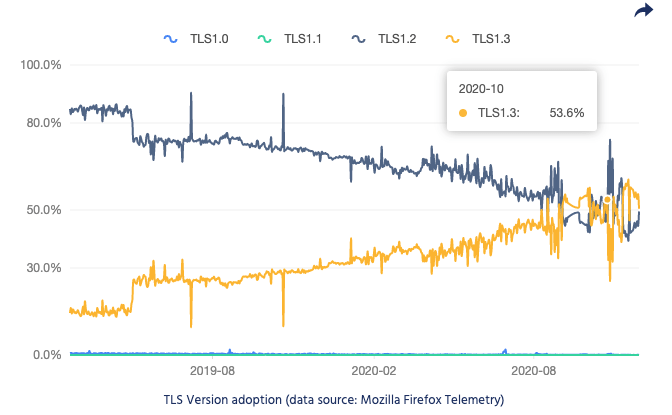Author Archives: Susannah Gray
Author Archives: Susannah Gray

Internet shutdowns harm societies, economies, and the global Internet infrastructure – that’s why we’re tracking disruptions on the Internet Society Pulse platform. There are thousands of disruptions to Internet access every day all over the world, but not all of them are the result of deliberate shutdowns. Lengthy outages are usually the result of technical errors, routing misconfigurations, or infrastructure failures. […]
The post Tracking Internet Shutdowns appeared first on Internet Society.

In order to align better with the Internet Society’s brand strategy, and to further differentiate our platform from other products with similar names, we have decided to rename our measurement platform.
The new URL is: https://pulse.internetsociety.org/
A redirect will be implemented so that anyone navigating to the previous URL will be automatically taken to Internet Society Pulse.
And, if you follow us on Twitter, you’ll see that our handle has been changed from @isoc_insights to @isoc_pulse.
The platform’s look and feel will not change.
Looking Ahead
We launched Insights in early December 2020 and are extremely proud of the impact that the platform has had in just three short months. We’re looking forward to ramping up the platform further in 2021 and will be adding three new focus areas throughout the year:
In 2021, we’ll also expand our analysis and reporting offerings, increase our engagement with the Internet measurements community, bring on board more data partners and add new features to the platform.
Stay up to date by signing up to our mailing list and Continue reading

Here at the Internet Society, we’ve always known that the Internet can be an integral part of our existence. 2020 has shown us that we need stable, reliable, and available Internet for everyone, everywhere.
Much of our work – and the work of the organizations that facilitate the smooth functioning of the Internet – is focused on helping to increase the Internet’s reach, reliability, resilience, availability and security. One of the ways we can track whether these efforts are working is to collect and measure data on various facets of the Internet. This helps to build up a bigger picture of the Internet’s development over time and the resulting data can be used to inform and support policy, investment, and education.
Internet Insights
The Internet Society Insights platform was launched in December 2020 to provide a curated set of insights to help everyone gain deeper, data-driven insight into the Internet. We’re collating data from several trusted organizations – data partners – and will examine Internet trends, generate reports, and tell data-driven stories on how the Internet is evolving.
In this blog, we catch up with some of our data partners and prominent members of the Internet measurement community to find out more about why Continue reading

There are many people, projects, and organizations that are collecting data on various facets of the Internet, but there’s no single site that provides a curated set of insights.
To help address this gap, we’ve launched the Internet Society Insights platform to help everyone gain deeper, data-driven insight into the Internet.
One of the key deliverables of the Measuring the Internet project, we have spent the last few months building the Insights platform together with our valued development partner, Frontwerks AG.
Data and Focus Areas
We’re collating data from several trusted organizations – our data partners – and will examine Internet trends, generate reports, and tell data-driven stories about how the Internet is evolving. Insights launched with two initial focus areas, Internet Shutdowns and Enabling Technologies.
Work is continuing on three additional focus areas – Internet Resilience, the Internet Way of Networking, and Keeping Traffic Local. We aim to add data and insights on these focus areas throughout 2021 and beyond.

Use and Share
Everyone is encouraged to use and share the text, images, and charts presented on Insights under our creative commons license.
If you would like to submit an idea for a guest post for the Continue reading

Things might have seemed quiet on our Measuring the Internet activities for the last few weeks, but lots of work has been taking place behind the scenes to ensure that the Internet Society’s Internet Insights platform will be ready for phase one of its launch in December 2020.
What We’re Working On
To help everyone gain deeper insight into the Internet, we’re consolidating trusted third-party Internet measurement data from various sources into a single platform – Insights. We’ll use this data to examine trends, generate reports, and tell data-driven stories. Insights will be available to everyone, everywhere so that anyone can better understand the health, availability, and evolution of the Internet.
Our Data Partners
Phase one of Insights will launch with an initial set of data that will help to illustrate two of our four focus areas: Internet Shutdowns and Enabling Technologies. We’re sharing data sourced from the following trusted third-party data providers and are working to integrate data from more organizations as the platform develops.

Are you interested in finding out more about Network Time Protocol (NTP), Network Time Security (NTS), and discovering why synchronized time is an essential foundation for online security?
Today is International Podcast Day, so why not spend it listening to the The Hedge Podcast #49: Karen O’Donoghue and Network Time Security.
Network Time Protocol (NTP) is one of the oldest Internet protocols in use. It enables the synchronization of clocks on computer networks to within a few milliseconds of standard universal coordinated time (UTC). Accurate time is also a critical component for online security, and many security mechanisms, such as Transport Layer Security (TLS) and digital signature creation and verification, depend on accurate timekeeping.
Updated Mechanism
NTP’s security mechanisms, however, were designed back in an era when the risk of attack was unlikely. Due to the continued expansion of the Internet, these mechanisms have become outdated. Work has been underway for many years in the Internet Engineering Task Force (IETF) Network Time Protocol Working Group to develop replacement technology, which will help to secure the Internet’s time synchronization infrastructure well into the future. The result of this work is in the Continue reading

A recent report – Milliseconds make Millions – commissioned by Google and published by Deloitte, has shown that mobile website speed has a direct impact on user experience. Reducing latency and increasing load times by just 0.1 second can positively affect conversion rates potentially leading to an increase in net earnings.
Over a four-week period, Deloitte’s research team analyzed mobile web data from 37 retail, travel, luxury, and lead generation brands throughout Europe and the U.S. Results showed that by decreasing load time by 0.1s, the average conversion rate grew by 8% for retail sites and by 10% for travel sites. The team also observed an increase in engagement, page views, and the amount of money spent by website visitors when sites loaded faster.
Multiple studies have consistently shown that faster page load speeds will result in better conversion rates. Akamai’s 2017 Online Retail Performance Report, for example, showed that a 100-millisecond delay in website load time can reduce conversion rates by 7% and that over half (53%) of mobile site visitors will leave a page that takes longer than three seconds to load.
HTTP/2 and IPv6: Faster and More Available
There’s good news: making some Continue reading

Here at the Internet Society, we believe that the Internet is for everyone. Our work centers on increasing the Internet’s reach, reliability and resilience, as well as ensuring that the network of networks remains open, globally connected, secure, and trustworthy.
But how do we assess whether our efforts – and the efforts of the global ecosystem of organizations that facilitate the smooth functioning of the Internet – are working? How can we see where protocols, such as IPv6, are being deployed and at what rate so we can better understand where more education on the benefits of such technologies might be helpful? Where can policy makers find a comprehensive set of data from various sources to help show decision makers that Internet Showdowns damage local economies and potentially harm citizens?
A Single Platform
There are many people, projects and organizations that are collecting data on various facets of the Internet, but there’s no single site that provides a curated set of insights. So, to help everyone gain deeper, data-driven insight into the Internet, the Internet Society is building a tool that consolidates trusted third-party Internet measurement data from various sources into a single platform – insights.internetsociety.org.
Continue reading

In early May 2020, the Open Standards Everywhere (OSE) project held a series of virtual training sessions for Internet Society Chapters. Over 70 Chapter representatives from around the world learned, in English, French, or Spanish, how to improve the overall security and availability of their Chapter’s websites and web servers by enabling IPv6, HTTP/2, TLS, and DNSSEC.
To assess everyone’s progress we tested each Chapter’s website before and after the training sessions using internet.nl and http2.pro. As a result of the OSE training sessions, many Chapters were able to significantly increase their website’s compliance. But one Chapter in particular, ISOC Kolkata, was able to take its website from 32% compliance to a whopping 100%. We caught up with ISOC Kolkata member Rittika Ratawa, who was nominated by the Chapter to attend the training, to find out more.
The Internet Society: What changes did you make to isockolkata.in as a direct result of the OSE virtual training session?
Rittika: After the training session, the Chapter made several changes. Firstly, we changed our DNS service provider as the one we had been using did not offer DNSSEC services or IPv6. Then we enabled DNSSEC by providing Continue reading
The IGF-USA took place in Washington D.C on July 24, 2017. During the event, the panel “Promoting a More Inclusive Internet” looked at current barriers to an inclusive Internet and explored how access could be expanded to underserved areas and to underrepresented communities. Moderated by Dr. Brandie Nonnecke, Research & Development Manager for CITRIS and the Banatao Institute at the University of California-Berkeley and Chair of the San Francisco-Bay Area Internet Society Chapter Working Group on Internet Governance, the panel brought together several experts on access provision, each with many years experience of connecting the unconnected in the USA and overseas.
Decentralized Approach
One of the main themes of the panel was that there is no ‘one size fits all’ approach to getting communities online. Rather than focus on technical deployment, the panelists argued that the focus needs to shift to what Internet access actually means to different communities and to solutions adapted to fit their specific needs. When proposing solutions, the first question that needs to be asked is, ‘What are the problems that Internet access will solve?’ Often, what works for one community won’t work for another. “No one should decide what other people’s Internet access Continue reading